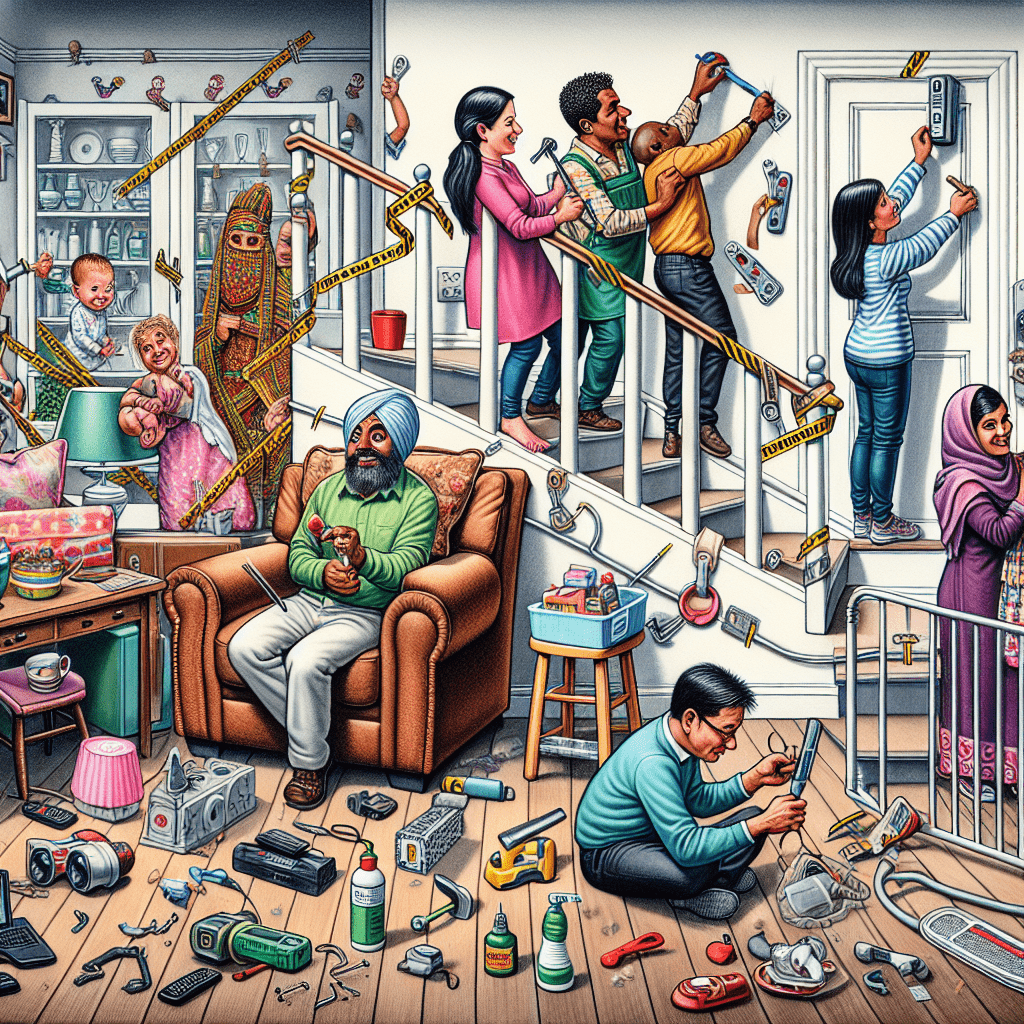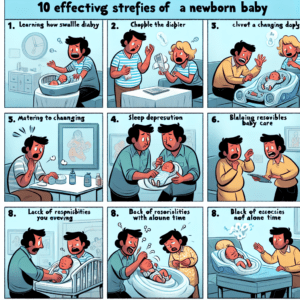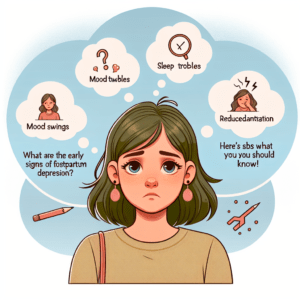Get your free Book Here

Is Your Home Safe? The Essential Baby-Proofing Checklist Every New Parent Needs!
Welcoming a new baby into your life is an incredible journey, filled with excitement and joy. However, as a new parent, it also presents unique challenges, one of which is ensuring that your home is a safe haven for your little one. Baby-proofing your home isn’t just a checklist; it’s a vital aspect of parenthood that requires your immediate attention.
In this comprehensive guide, we’ll explore essential baby-proofing strategies and practical tips tailored for every corner of your home. We’re here to ensure that you feel confident about your baby’s safety while they start to explore the world around them. Let’s dive in!
1. Assessing Your Home Environment
Before diving into the tangible steps to baby-proof your home, take a moment to assess your surroundings. Walk through your home with fresh eyes, and imagine it from your baby’s perspective. What looks like a harmless piece of furniture to you could be a climbing opportunity for a curious crawler.
Check the following areas critically:
- Sharp Edges: Coffee tables, corner shelves, and any furniture with sharp edges pose risks for falls.
- Accessibility: Consider how accessible items like cleaners, medicines, or small objects are. If your baby can reach it, they might put it in their mouth.
Remember: You know the layout of your space intimately, but it’s crucial to consider how dangerously inviting it may seem to an infant.
2. Crawling and Walking Stages: Protecting the Explorers
As your baby grows, they will start crawling and eventually walking. This is a thrilling time filled with milestones but also heightened risks.
Here are some essential strategies to baby-proof your home for this stage:
- Non-Slip Rugs: Use non-slip backing on area rugs or secure them to the floor. This will prevent your baby from slipping and falling.
- Furniture Anchors: Secure large or heavy furniture pieces like bookshelves and TV stands to the wall to prevent tipping.
- Baby Gates: Install fences at the top and bottom of stairs or in rooms that should be off-limits to crawling babies.
The main goal during these phases is limiting access to areas where they can hurt themselves and keeping them safe from falls.
3. Kitchen Safety: A Hotspot for Hazards
The kitchen is a hub of activity, and while it’s a fantastic place for future family gatherings, it can also be perilous for little ones. Keep your kitchen safe by following these tips:
- Cabinet Locks: Install safety locks on all lower cabinets and drawers to keep harmful items like knives and cleaners out of reach.
- Stove Safety: Use stove knob covers and always turn pot handles inward to prevent hot liquids from being yanked off the stove.
- Disconnect cords: Hook your appliance cords behind counters. Babies are fascinated by hanging cords and can easily pull a toaster or blender off the counter.
Kitchen safety can drastically reduce the risk of your baby getting burned, cut, or poisoned.
4. Living Room: The Heart of the Home
The living room is where families gather, making it equally essential to secure it adequately. Here are some strategies to consider:
- Cord Management: Use cord organizers or safety clips to keep electrical cords out of reach, as these can be choking hazards and could result in electric shocks.
- Remove Fragile Decor: Consider the items within reach of baby hands. Take down fragile decor or small items that can be easily swallowed.
- Portable Furniture: Ensure that any furniture that could potentially be climbed on is secure or too heavy for your little one to tip over.
Creating a safe living space allows for worry-free family gatherings and playtimes.
5. Bedroom Safety: Sweet Dreams
Bedtime routines are vital for both parents and baby, but safety must be prioritized even during these peaceful moments. Consider the following safety measures:
- Co-Sleeping Precautions: If you plan to share a bed, research guidelines for safe co-sleeping to avoid accidental suffocation.
- Crib Safety: Ensure that the crib meets current safety standards. The mattress should fit snugly, with no gaps.
- Avoid Pillow and Toy Overload: Keep soft pillows, loose blankets, and plush toys out of your baby’s crib to minimize suffocation risk.
By ensuring a safe sleeping environment, you can help guarantee your baby enjoys restful, safe nights.
6. Bathroom Safety: Slippery When Wet
Bathrooms can be extremely hazardous. Follow these essential steps in your bathroom:
- Non-Slip Mats: Place non-slip mats around the tub and bathroom floor to reduce the risk of your baby slipping and falling on wet surfaces.
- Temperature Control: Adjust your water heater to a maximum of 120°F to prevent scalding.
- Storage Solutions: Medicine cabinets should be high enough that your little one can’t reach them, and you should use safety caps for medications and other toxic substances.
By ensuring bathroom safety, you can minimize a significant source of accidents in the home.
7. Outdoor Safety: Expanding Boundaries
As your child becomes more mobile, they’ll want to explore outdoors as much as they do indoors. It’s essential to create a safe outdoor environment:
- Fenced Yard: If you have a yard, ensure it’s securely fenced and check for gaps where a curious toddler might escape.
- Outdoor Furniture: Ensure that outdoor furniture is stable, without sharp edges that could injure a child.
- Natural Hazards: Regularly check for dangerous plants or sharp items that can harm your baby.
Outdoor safety is indispensable for your peace of mind, especially when your little explorer wants to discover the outside world.
8. Growing With Your Child: Transitioning Towards Independence
As your child grows, your baby-proofing efforts will also need to evolve. What was a concern when they were infants can change as they become toddlers with greater mobility and dexterity.
- Encourage Safe Exploration: Allow your child to explore within safe, supervised spaces, empowering their curiosity while ensuring protection.
- Teach Boundaries: Begin introducing basic safety topics to your child as they reach the toddler stage. Teach them not to play with hot stovetops, water, sharp objects, etc.
- Regular Evaluation: Regularly reassess your home environment as your child grows. Their interests and needs will change rapidly, so stay alert.
Creating a safe home is a dynamic process that will evolve as your child learns and grows, presenting new challenges requiring new solutions.
Conclusion
Creating a safe environment for your newborn is a vital and rewarding task that sets the foundation for their early exploration and development. Though baby-proofing can feel overwhelming, taking a step-by-step approach allows you to breathe easier. By assessing various rooms, ensuring safety measures and transitioning as your child grows, you’re fostering a secure space for them to flourish—with a little love and plenty of care.
Raising a child is not just about protecting them from harm; it’s also about teaching them how to explore their environment safely and to understand boundaries as they grow.
FAQs
Q: When should I start baby-proofing my home?
A: Start baby-proofing your home before your baby arrives. Many parents find it helpful to have a safe environment in place ahead of time as it allows them to ease into their new parental responsibilities.
Q: What are some easy DIY baby-proofing hacks?
A: Simple DIY hacks include using pool noodles on sharp furniture edges, using rubber bands to secure cords, and employing drawer stops to keep cabinets from opening too far.
Q: Are there products I should specifically invest in for baby-proofing?
A: Essential products include safety gates, cabinet locks, outlet covers, and corner protectors. Investing in quality items ensures durability and efficacy.
Q: How often should I reassess my baby’s safety in our home?
A: Reassess your child’s environment every few months, or whenever your child reaches a new milestone in mobility or development. Additionally, consider a yearly or bi-annual comprehensive safety check.
Q: Can I baby-proof every room in my home?
A: Yes! Every room can have safety features in place; it just may require different strategies depending on the room and the potential hazards.
Ensuring that your home is a safe space for your child is a journey filled with love, vigilance, and an ever-evolving understanding of your little one’s needs and abilities.
Instantly Access Your Free Children’s Books Here! (https://payhip.com/BlueCherryStore) – Disclaimer: As an Amazon Associate, I earn from qualifying purchases, I may earn a commission from qualifying purchases as an affiliate. Please note that I only recommend products I believe will provide value to my readers. (M)







